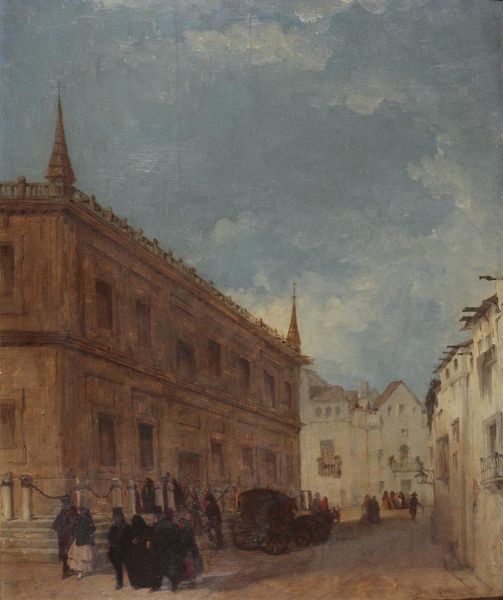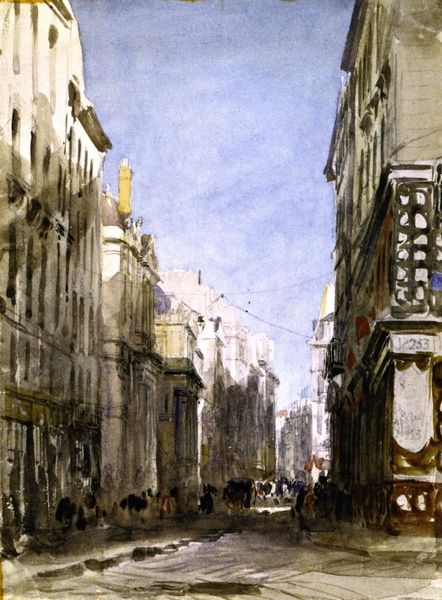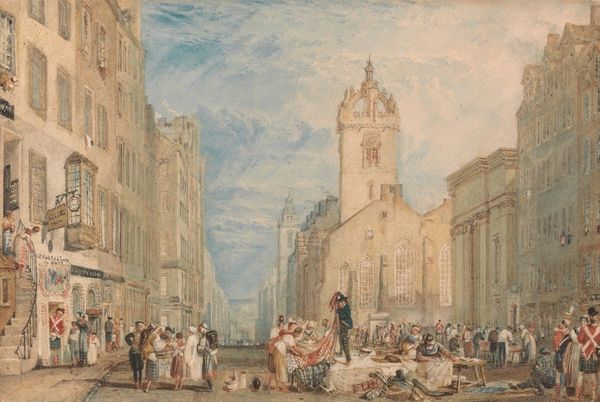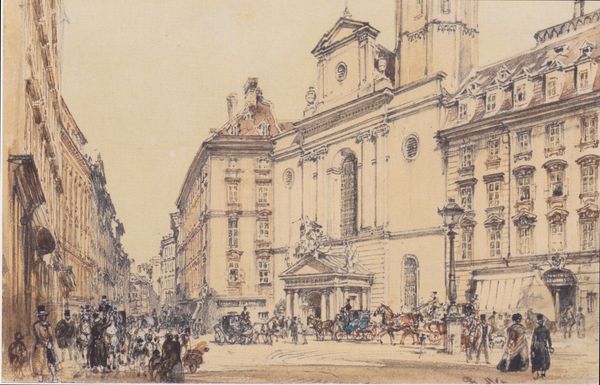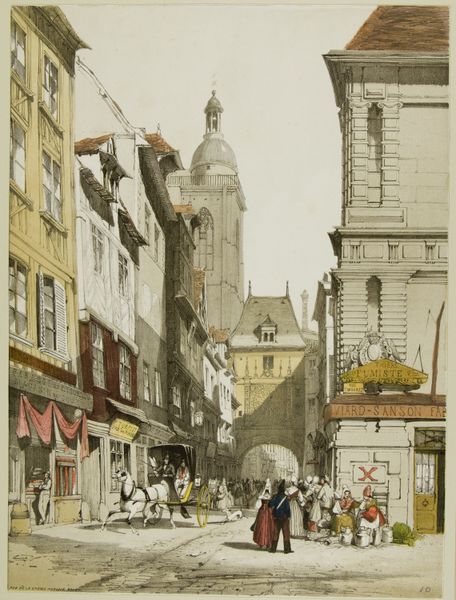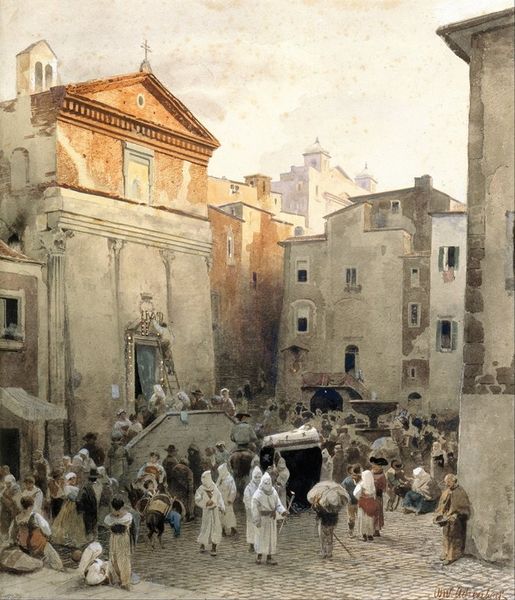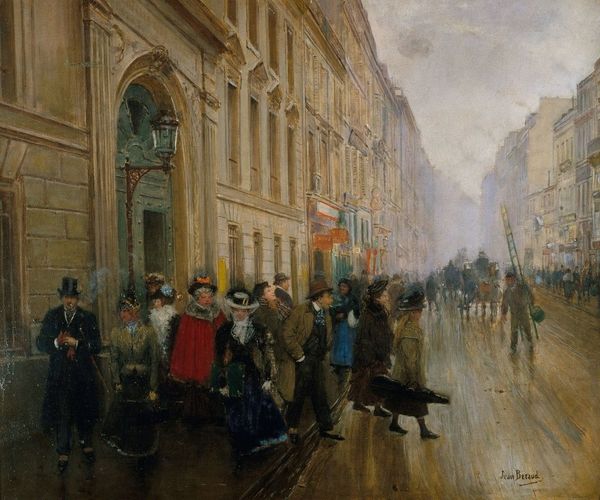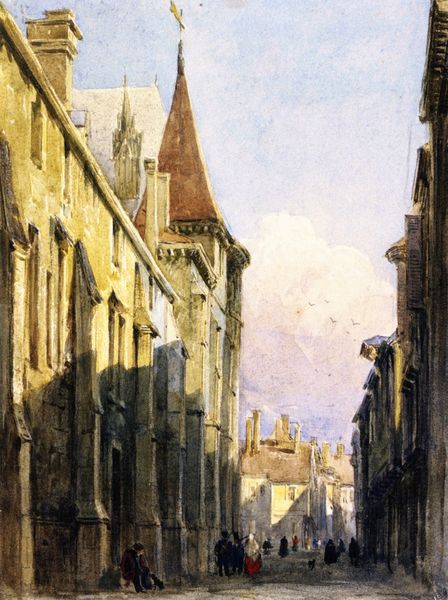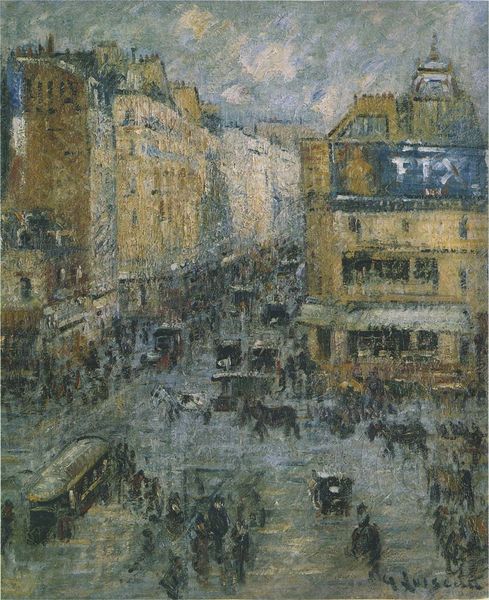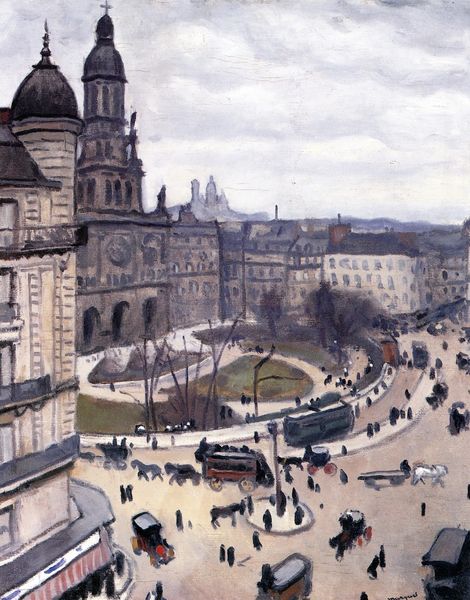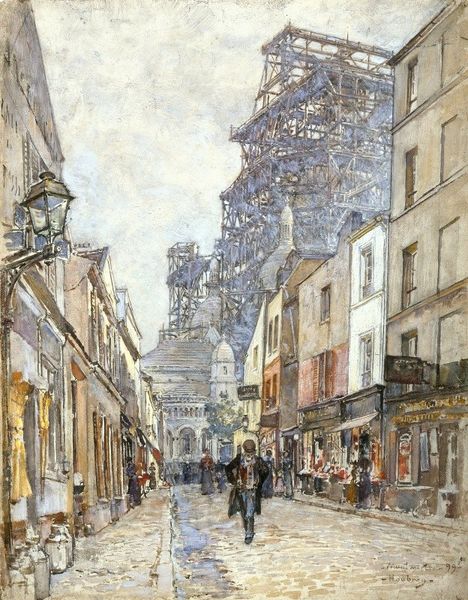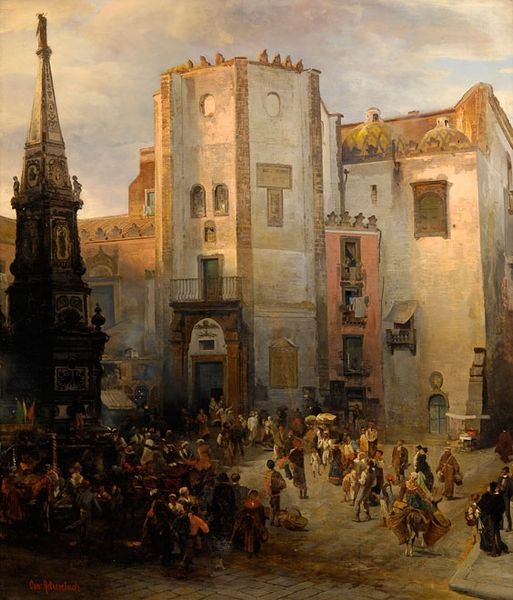
View of the Church of Notre Dame de Lorette and the Rue Fléchier, Paris c. 1860 - 1900
0:00
0:00
painting, oil-paint, impasto
#
painting
#
oil-paint
#
charcoal drawing
#
oil painting
#
impasto
#
cityscape
#
realism
Dimensions: height 73.5 cm, width 60 cm, height 87.3 cm, width 73.5 cm, depth 7.4 cm
Copyright: Rijks Museum: Open Domain
Editor: We are looking at Antoine Vollon's oil painting, "View of the Church of Notre Dame de Lorette and the Rue Fléchier, Paris," circa 1860 to 1900. The city seems almost subdued, despite all the activity on the street. What do you see in this piece that really speaks to the cultural moment? Curator: Well, first, let’s consider Paris itself at this time. The latter half of the 19th century saw massive urban redevelopment. Think Haussmann's plan – wide boulevards, modernized infrastructure. Does this perspective, looking down the street, feel deliberate? Editor: It does, almost like it is showing off the urban planning. Curator: Exactly! This isn’t just a cityscape; it’s a visual representation of progress, order, and control. Note the church – a solid, imposing presence – alongside the burgeoning commerce on the Rue Fléchier. The placement suggests a tension between traditional authority and the emerging modern life, but would you say it is really a tension? Editor: Now that you mention it, it’s almost a peaceful coexistence. Both are presented as integral to the urban landscape. Curator: Precisely. And the grey palette further enhances that sense of the modern city. It's a more subdued and perhaps realistic depiction than earlier romantic portrayals of Paris. This challenges previous artworks, wouldn't you agree? Editor: Absolutely, seeing it as a statement on urban redevelopment changes everything. It's more than just a pretty picture. Curator: Indeed. It's a commentary on the changing social and political landscape, filtered through Vollon's artistic lens. We gain insights into how art portrays public life during modernization, by linking it to politics and social history. Editor: I’ll definitely look at cityscapes differently now! Thanks.
Comments
No comments
Be the first to comment and join the conversation on the ultimate creative platform.
